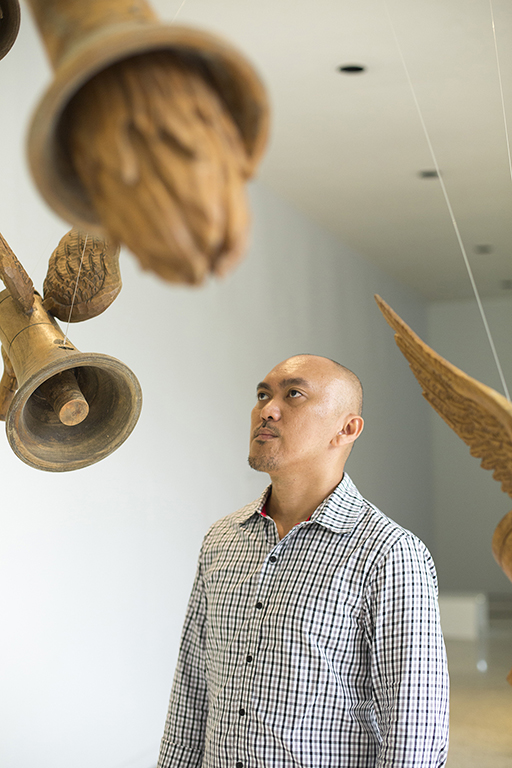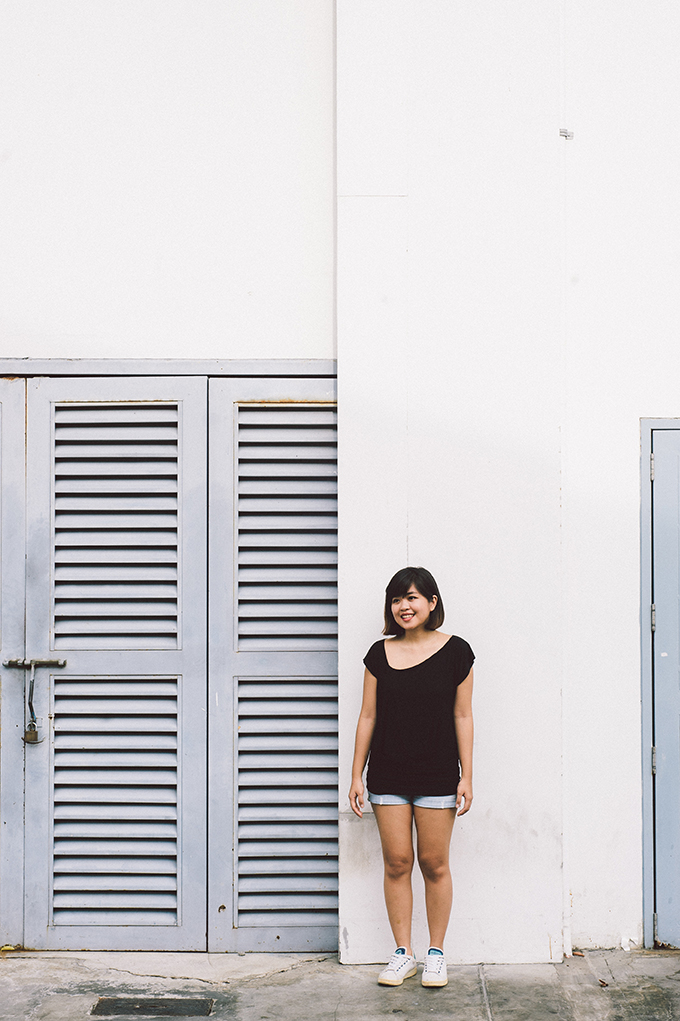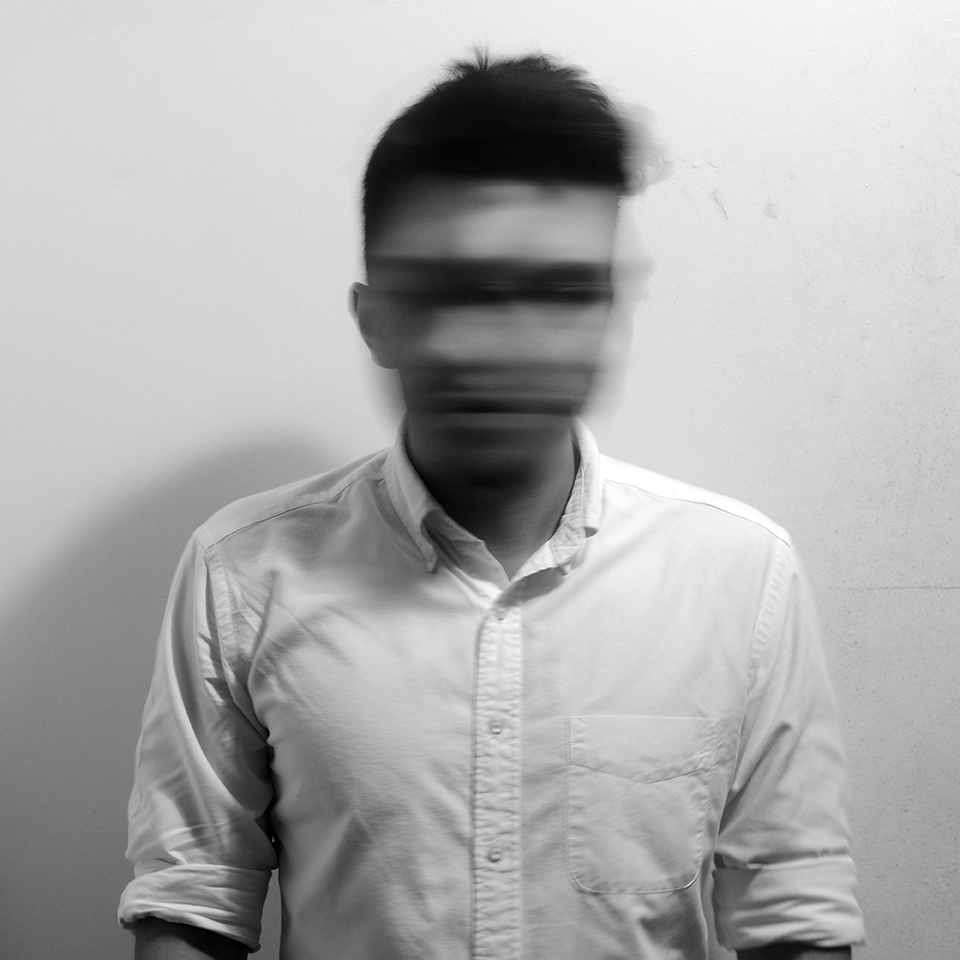INSIDE OUT
This artist peels away the layers of human experience through his use of transparent media

Just how can one respond to the question, “Who are you?” It is the most fundamental question in everyday conversations, yet one that perhaps always irritated philosophers. The particulars of name, age and occupation never seem to suffice, as it is in every individual a search, if not a yearning for something more. This ontological inquiry is present in Alfredo “Esqui” Esquillo Jr.’s works as he tries to look inwards and attempt to understand the being of humans. His objective almost resonates with Gabriel Marcel’s reflection on the mystery of being, and the desire for transcendence, meaning, coherence, and truth. And as the French philosopher says, “to truly confront mystery, one must open themselves up to the avenues designed for this purpose—religion, art, and metaphysics.” Esquillo’s concept of loob is almost religious, in fact, as it goes beyond the temporal and the ordinary experience to search not only for oneself but that which makes or allows it to be.
How would you describe your work?
“Loob” is an attempt to convey what is essential in Pinoy culture and value system. Loob points to the inner depths of personhood. It gives meaning to what is material (labas). Since loob and its functions are abstract, it can only be manifested via galaw (movement), gawa (action), and kilos (activity). In a way, I’m trying to illustrate a condition of loob (gaan ng loob, and its opposite, bigat ng loob, kalooban ng Dios) by using imagery composed of bodily gestures and symbolism as containment of what is spiritual and experiential.
What is the significance of the medium you used?
Since loob is layered (malay, isip, dama, pananampalataya, bait, buti, kaluluwa, etc.), I’m also using a parallel layering in the materials that I used. I chose painting on piña, a local fabric, for its transparent quality. This serves as an over-layer for another painting underneath in oil on pelon, another local fabric. The layering of two paintings of different grounds is quite surprising and amazing to me. It is very much outside of what may be considered traditional such as oil on canvas. Since pelon and piña are different grounds, they require different brush techniques and approaches to application of pigment.
What would you like the audience to experience?
I’m always happy to bring an element of surprise to the audience. But the technical aspects of the work come secondary to the subject and narratives being represented. The work should always touch the audience. And I wish they would be able to see through the surface, see the loob.
THE SANDS OF TIME
Jel Suarez’s free-flowing interpretation of reality spills over into her art

There’s an inexplicable sense of nostalgia emanating from Jel Suarez’s works. They’re part vintage Americana, part golden age of the ’50s, with a hint of that time when kids still read encyclopedias, listened to vinyl records, and used analog Lomo cameras to take photos—the simple life, so to speak.
But that is not to say she’s riding on the throwback train or that her works are just as simple. In fact, it’s quite the opposite: handmade collages inspired by and made from old print advertisements, textbooks, and anatomical illustrations, her creations reveal realizations about the environment, human nature, and the intermingling between the body and the world. Using sand for her latest project, Suarez evokes a return to one of the basic elements of the earth to create a semi-abstract, textured image.
What was your creative process for this project like?
I merely work with paper, so it was great playing with sand for this purpose. As a preschool teacher, my art processes usually spring from the classroom. For this project, I dyed fine sand with colored chalk and used it to color and form an added layer. Sand was used to add a visual texture to the whole image. I named this collage diptych, “Killing Yourself to Live.” I found inspiration after opening my copy of a dated guidebook about rock climbing.
I typically just play around with the images I’m drawn to at the moment, then I end up with a picture or an idea on how I will position them. For this project, I initially tried a few things before creating a non-figurative layout of the images.
What was the experience like using a different medium other than what you’re used to?
It was extra messy. I hated glitter ever since I was a kid—sand sort of bears a resemblance to it, plus it was glimmering throughout the process—so there was a love-hate chaos on my work space. But on top of that, using an unlikely medium was just as fun.
Recently, I’ve been trying to get hold of a paint brush because it has always been a childhood frustration of mine to paint and draw. I never learned how to draw, which is mainly the reason why I ended cutting stuff up instead. Even so, it was upon making an attempt to try new stuff that I, in fact, amazed myself, too.
IT’S ALL IN YOUR HEAD
A photorealist grapples with the human body’s most impenetrable part

It is always a curious case when man tends to reduce himself or others into verifiable facts, all included in documents that list down empirical data and other relevant statistics. And as visual representation to realistically show one’s appearance is the typical headshot—a standard close-up portrait of the subject. The single picture that immortalizes the face, whether one likes it or not, will be attached in all forms of identification. This containment within the headshot is perhaps what fascinates photorealistic artist Luis Santos, whose works mostly revolve around the head, and peculiarly, what is inside or encases it. His first- ever finished painting was that of a human skull, and pretty soon, he started painting skulls of animal specimens to complement his works. Last year, in his exhibition entitled “Then it happened,” he depicted 10 portrait shots of people with blurred faces captured while they were “in the moment.” Santos’ distorted portrayal of death, remains, life, or life-in-between is an attempt to grasp the elusiveness of the human being, one whose personhood, stories, and experiences cannot be limited within a simple, squared headshot.
How would you describe your work?
For the theme “Things that are strange and beautiful,” I wanted to make a distorted or destroyed image of a severed head of a Roman statue.
What is your creative process for this project like?
I’ve been experimenting lately with silkscreen with the use of found images. The black background is made up of layers of different mediums (acrylic, lacquer, spray paint, and charcoal) of the same color. The image is repeatedly silkscreen- printed, then erased, then printed again.
What was the experience like using charcoal, a different medium other than what you’re used to?
A mess. This is my first time using charcoal in my work and I didn’t anticipate how it gets into everything. I like its texture and how it reacts with paint though.
When you create an artwork, what do you consider first, the subject or the outcome you would like to achieve?
It really depends. I’ve encountered both processes. I write down ideas and the medium or process that I want to experiment with and explore further. Sometimes an idea dictates what the exhibition will be like or what medium I’ll use. And sometimes, it’s the medium itself that is the idea for the work. It depends on where my head is at the moment.












































